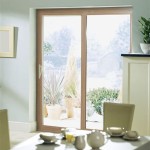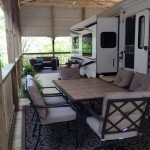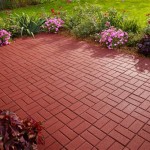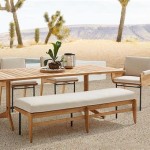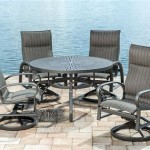Small Patio Fire Pit Tables: A Guide to Enhancing Outdoor Spaces
Small patio fire pit tables represent a convergence of functionality and aesthetics, offering a practical and visually appealing addition to limited outdoor spaces. These units provide warmth, ambiance, and a central gathering point for homeowners with compact patios, balconies, or decks. Understanding the various aspects of small patio fire pit tables, including their types, materials, fuel sources, safety considerations, and maintenance requirements, is crucial for selecting the right model and ensuring its long-term enjoyment.
Types of Small Patio Fire Pit Tables
Small patio fire pit tables are available in a variety of designs and configurations, catering to different aesthetic preferences and space constraints. The primary distinction lies in their shape and size, with round, square, and rectangular models being the most common. Round fire pit tables often create a more intimate and conversational atmosphere, while square or rectangular models can be more easily integrated into existing patio furniture arrangements.
Beyond the basic shape, the design of the table itself can vary significantly. Some models feature a minimalist aesthetic, with clean lines and simple materials, while others incorporate more elaborate details such as decorative stone, tile inlays, or intricate metalwork. The table's surface can also vary, ranging from smooth concrete to textured stone or durable metal. The choice of design should complement the existing outdoor décor and reflect the homeowner's personal style.
Another important differentiating factor is the presence or absence of a surrounding table edge. Some fire pits are designed as standalone units with a minimal border around the burner, while others incorporate a wider tabletop surface that can be used for placing drinks, snacks, or other items. Models with a larger table surface can be particularly useful for smaller patios where space is at a premium, as they effectively combine the functions of a fire pit and a small outdoor table.
Finally, fire pit tables can be categorized by their portability. Some models are designed to be stationary, offering a permanent or semi-permanent fixture for the patio. Others are more lightweight and portable, allowing them to be easily moved and stored as needed. Portable fire pit tables can be a convenient option for renters or homeowners who want the flexibility to reposition their fire pit or take it with them when they move.
Materials and Construction
The materials used in the construction of a small patio fire pit table significantly influence its durability, appearance, and overall performance. Common materials include steel, aluminum, concrete, stone, and tile, each offering its own unique set of advantages and disadvantages.
Steel is a popular choice for its strength and affordability. Steel fire pit tables are often powder-coated to resist rust and corrosion, but proper maintenance is still necessary to ensure their longevity. Aluminum is another common material, known for its lightweight properties and resistance to rust. Aluminum fire pit tables are typically more expensive than steel models, but they offer superior durability in outdoor environments.
Concrete fire pit tables are prized for their substantial weight and modern aesthetic. Concrete is a highly durable material that can withstand harsh weather conditions, but it can also be susceptible to staining and cracking if not properly sealed. Stone fire pit tables offer a natural and elegant look, but they can be quite heavy and expensive. Stone options include granite, marble, and slate, each with its own unique color and texture.
Tile is often used as an accent material or for the tabletop surface of fire pit tables. Tile is durable, easy to clean, and available in a wide range of colors and patterns. Ceramic and porcelain tiles are common choices for outdoor applications, as they are resistant to moisture and fading. The construction quality of the fire pit table is also an important consideration. Look for models with sturdy frames, well-welded joints, and durable finishes to ensure long-lasting performance.
Fuel Sources and Safety Considerations
The fuel source for a small patio fire pit table is a critical factor to consider, as it directly impacts its ease of use, cost of operation, and environmental impact. The most common fuel sources are propane and natural gas, although some models also use wood or gel fuel.
Propane fire pit tables are the most popular choice, as they are relatively easy to install and operate. Propane tanks are readily available and can be easily connected to the fire pit table. Propane fire pits offer a consistent flame height and heat output, and they produce minimal smoke and ash. However, propane tanks can be bulky and require storage space. The cost of propane can also fluctuate depending on market conditions.
Natural gas fire pit tables offer a more permanent and convenient solution, as they are connected to the home's natural gas line. Natural gas fire pits eliminate the need for propane tanks and provide a consistent and reliable fuel supply. However, natural gas fire pits require professional installation and may not be suitable for all patios or decks. The cost of natural gas can also vary depending on the region and season.
Wood-burning fire pit tables offer a traditional and authentic fire experience, but they require more maintenance and attention than propane or natural gas models. Wood-burning fire pits produce smoke and ash, which can be a nuisance for some users. They also require a source of dry firewood and a safe way to dispose of the ashes. Gel fuel fire pit tables are a relatively new option that offers a clean and convenient burning experience. Gel fuel is a smokeless and odorless fuel that burns with a vibrant flame. However, gel fuel can be more expensive than propane or natural gas, and it may not provide as much heat.
Safety is paramount when operating any type of fire pit table. It is essential to follow all manufacturer's instructions and local fire codes. Never leave a fire pit unattended, and keep children and pets at a safe distance. Maintain a clear area around the fire pit, free from flammable materials such as leaves, branches, and furniture. Ensure that the fire pit is placed on a level and stable surface to prevent it from tipping over. When using propane or natural gas fire pits, check for gas leaks regularly and have the unit serviced by a qualified technician.
Furthermore, the surrounding environment plays a crucial role in safety. Overhanging structures, such as awnings or tree branches, can pose a fire hazard. Wind conditions can also affect the behavior of the flames and the dispersal of smoke. It is advisable to avoid using the fire pit during high winds or in dry, wooded areas. Always have a fire extinguisher or a bucket of water nearby in case of emergencies.
Consider the placement of the fire pit table in relation to neighboring properties. Excessive smoke or noise can disrupt the peace and quiet of nearby residents. Check local ordinances regarding open burning and noise restrictions before using the fire pit. By adhering to these safety guidelines, users can enjoy the warmth and ambiance of a small patio fire pit table responsibly and safely.
Maintenance and Care
Proper maintenance and care are essential for extending the life of a small patio fire pit table and ensuring its safe operation. Regular cleaning, inspection, and preventative measures can help to prevent damage and maintain its appearance.
Cleaning the fire pit table should be done regularly, especially after each use. Remove any debris such as leaves, twigs, and ash. Wipe down the surface of the table with a damp cloth and mild soap. Avoid using harsh chemicals or abrasive cleaners, as they can damage the finish. For fire pit tables with tile surfaces, use a grout cleaner to remove any stains or discoloration. Stainless steel components can be cleaned with a stainless steel cleaner to maintain their shine.
Inspect the fire pit table regularly for any signs of damage, such as cracks, rust, or loose connections. Pay close attention to the burner, gas lines, and ignition system. If any problems are detected, have the unit serviced by a qualified technician. Check the propane tank or natural gas connection for leaks. Use a soapy water solution to test for leaks. If bubbles appear, there is a leak that needs to be addressed immediately.
Protecting the fire pit table from the elements is important for preventing damage. When not in use, cover the fire pit table with a protective cover to shield it from rain, snow, and sun. Store propane tanks in a cool, dry place away from direct sunlight. During the winter months, it may be necessary to store the fire pit table indoors or in a covered area to protect it from freezing temperatures. Regularly inspect and clean the burner ports to ensure proper airflow. Clogged burner ports can cause uneven flames or prevent the fire pit from lighting.
For wood-burning fire pit tables, regularly remove ashes and clean the fire pit bowl. Dispose of ashes in a metal container with a lid. Never dispose of hot ashes in a plastic container or near flammable materials. By following these maintenance and care tips, users can keep their small patio fire pit table in good condition and enjoy its benefits for years to come.

Kenwood Gas Fire Pit Table Simply Wood

The 5 Best Smokeless Fire Pits Of 2024 Reviews By Wirecutter

12 Best Outdoor Fire Pit Ideas Diy Backyard
Outdoor Patio Fire Pit Sets Costco

Double Sided Outdoor Fireplace Paradise Restored Landscaping Backyard Renovations

Fire Pit Ideas And Inspiration Forbes Home

53 Stunning Outdoor Fire Pit Ideas Chaylor Mads
Outdoor Patio Fire Pit Sets Costco

30 Fire Pit Ideas That Are Under The Budget Backyard Patio

12 Best Outdoor Fire Pit Ideas Diy Backyard

